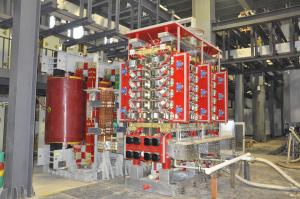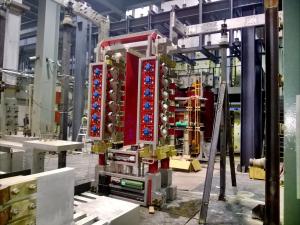New step forward for ITER's poloidal field converters
Following the successful commissioning of the ITER power supply test facility at the Institute of Plasma Physics, Chinese Academy of Sciences (ASIPP) last December, another exciting step forward has been made in the procurement of ITER's poloidal field converters.
The short circuit tests on the ITER poloidal field converter bridges and external bypass were accomplished successfully on 8 January 2014. In a series of stringent tests, partially witnessed by technical staff from the ITER Organization and the Chinese Domestic Agency, the soundness of the design and manufacture of these key components was demonstrated.
These positive test results—which demonstrate that manufacturing can fully meet the design requirements of the ITER poloidal field converters—pave the way for series production to begin.



